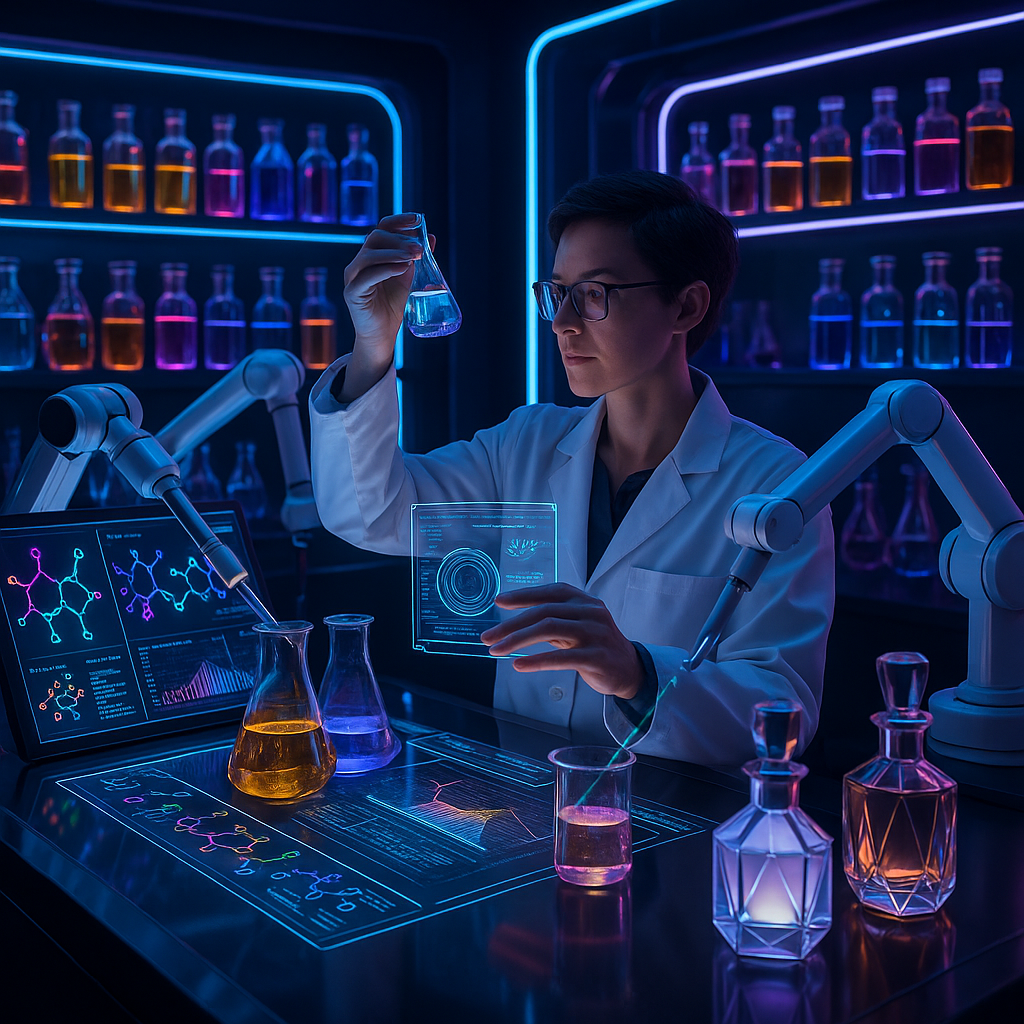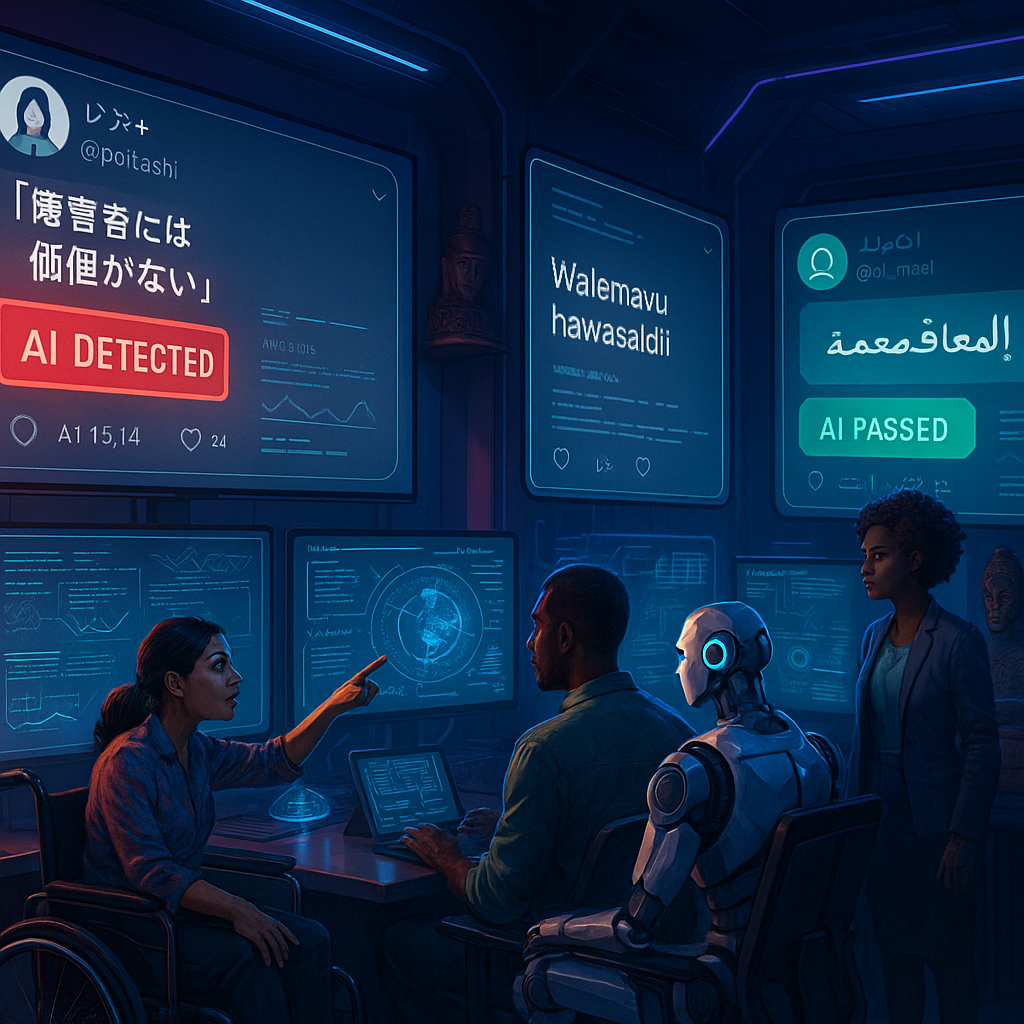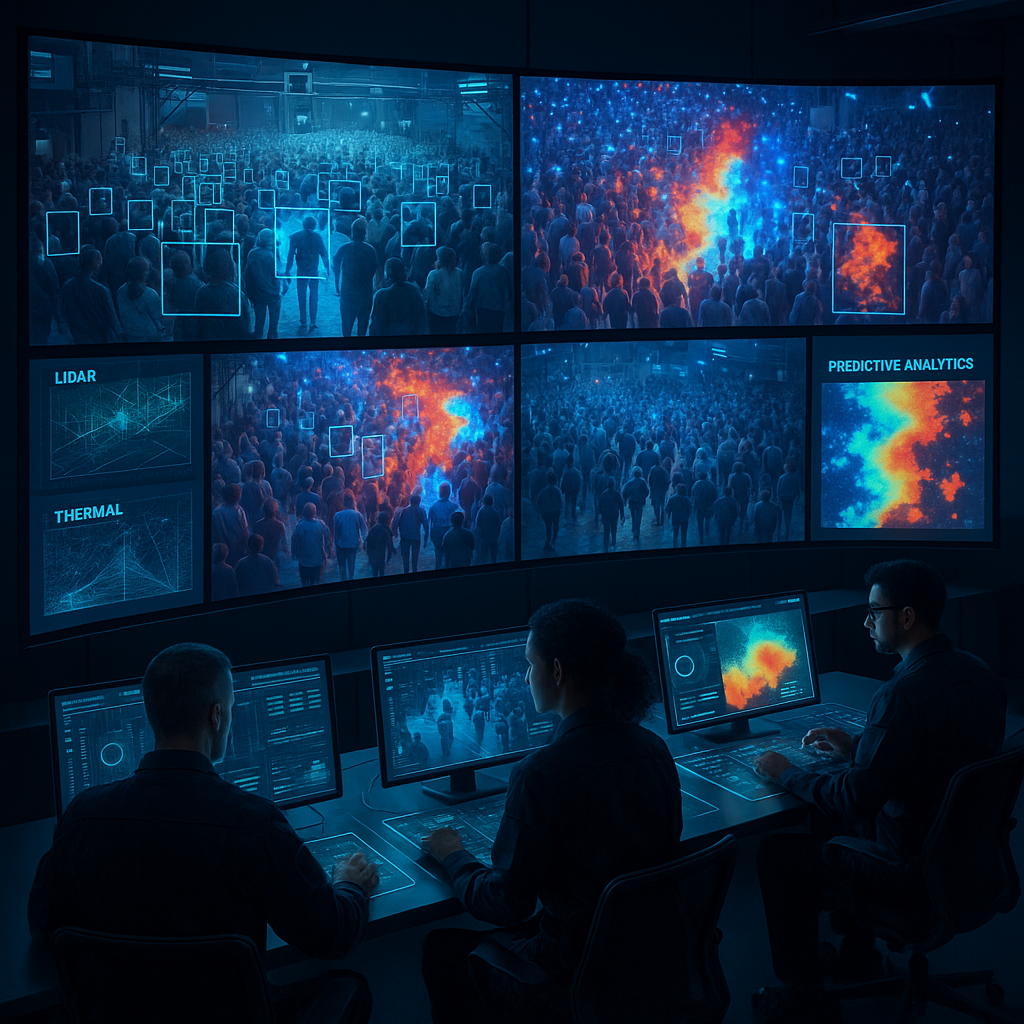Key Takeaways
- Generative AI reinvents perfumery at the molecular level. By leveraging artificial intelligence, generative networks analyze intricate molecular data and scent descriptors, producing original fragrance profiles difficult or impossible for traditional perfumers to conceive.
- Digital noses decode and design scents, bridging fantasy and formula. Olfactory AI systems combine advanced mass spectrometry and expansive essential oil databases to both reconstruct classic fragrances and imagine completely unprecedented olfactory compositions.
- User-driven scent creation broadens access to perfume artistry. Customizable AI models now translate individual preferences into deeply personalized fragrances, dismantling the old monopoly of expert perfumers and placing creative power in the hands of anyone with a digital toolbox.
- Synthesizing data with delight, AI-generated perfumes undergo rigorous validation. These machine-created aromas are tested through stringent sensory trials, blending algorithmic predictions with the discernment of human testers to ensure the synthetic creations truly captivate the senses.
- The question of authorship. Digital rights and AI scent creation come to the forefront. As AI systems generate fragrances, issues surrounding ownership, attribution, and intellectual property raise the urgent need for new legal and conceptual frameworks in olfactory innovation.
- Pushing ethical boundaries, AI in perfume demands fresh guidelines. With technical ingenuity comes new responsibility: Should AI have creative rights, and who is ultimately accountable for the artistry of algorithms?
The convergence of generative design and olfactory AI not only extends the possibilities within perfumery but compels us to fundamentally rethink the legal and ethical foundations of creativity. To understand the scented future where technology, chemistry, and rights intersect, we must look beyond the bottle to the very nature of authorship and imagination.
Introduction
Imagine a trail of invisible molecules (rose, smoke, or the sunlit freshness after rain). For centuries, master perfumers have captured the ineffable, shaping memories, passions, and identities through a mysterious dance of chemistry and intuition. Today, the art of scent enters a new epoch as generative AI steps into this sensory universe, decrypting the code of olfaction and generating fragrances beyond the limits of human imagination.
Algorithms now spin new scent profiles, digital noses decode historic masterpieces, and cherished boundaries of authorship and expertise begin to blur. When anyone can craft a signature aroma with a simple interface, and when machines dream up perfumes unlike anything on Earth, what does it mean to be a creator? This evolving landscape leads us to explore how AI and generative design are not only transforming the experience of fragrance but also rewriting the rights, ethics, and meaning of digital creation itself.
The Science of Digital Scent Creation
Understanding Olfactory AI Architecture
The synthesis of artificial intelligence and perfumery weaves together neuroscience, chemistry, and cutting-edge machine learning. AI-driven scent creation relies on advanced generative models that process the atomic intricacies of fragrance molecules, echoing the brain’s nuanced interpretation of smell. These intelligent systems sift through massive databases capturing thousands of aromatic compounds, mapping their interactions and predicting perceptual effects through layered mathematical models.
Stay Sharp. Stay Ahead.
Join our Telegram Channel for exclusive content, real insights,
engage with us and other members and get access to
insider updates, early news and top insights.
 Join the Channel
Join the Channel
Recent developments in odor generative diffusion techniques enable AI to predict how unique molecular arrangements will be perceived by humans with remarkable precision. IBM’s Project Philyra, for example, utilized historical perfume compositions and sales patterns to design commercial scents, achieving a notable 93% correlation between AI predictions and actual human sensory feedback.
Core technological pillars supporting this revolution include:
- Mass spectrometry data analysis for in-depth molecular profiling
- Graph neural networks modeling molecular connectivity and aroma potential
- Generative adversarial networks (GANs) for producing innovative scent architectures
- Deep learning algorithms calibrated to forecast human olfactory perception
These interconnected systems form the digital backbone for new advances in the art and science of scent.
From Data to Aroma
Bridging digital calculations and the final sensory experience requires a sophisticated, multi-stage pipeline. AI systems no longer simply mix molecular components at random; instead, they reflect a deep chemical understanding of how nuanced molecules interact and evolve, generating fragrances that remain coherent and evocative across time and skin chemistry.
Givaudan’s CARTO platform illustrates this synthesis of computational power and human expertise. CARTO enables perfumers to explore millions of combinations, optimizing for factors such as:
- Molecular stability in both formulation and wear
- The rate of evaporation and scent longevity
- Economic feasibility and environmental sustainability of materials
- Adherence to strict regulatory and safety standards
These technological leaps transform how we design fragrances, and in doing so, spark deeper questions about creativity, collaboration, and the evolving identity of the artist in a world shared with intelligent machines.
The Creative Process Reimagined
Collaborative Intelligence in Perfumery
Instead of replacing human creativity, AI presents itself as a powerful collaborator. Perfumers now partner with AI systems, blending intuition and cultural knowledge with the computational capacity to explore the vast aromatic unknown. This hybrid approach has paved the way for previously unattainable scents and has even transformed the product development timeline.
For instance, firms like Firmenich employ AI platforms to suggest unexpected ingredient pairings, which human perfumers then refine and perfect. This partnership not only accelerates innovation, reducing development time by about 30%, but also elevates the success rate of new fragrances brought to market.
The interplay between human artistry and algorithmic exploration becomes a catalyst for creativity, reshaping the landscape of what perfumery can become.
Breaking Traditional Boundaries
AI’s capacity to process immense data sets and unearth novel relationships is expanding the universe of scent. The technology now empowers creators to:
- Discover previously unexplored and boundary-pushing aromatic combinations
- Translate complex emotions or abstract concepts into tangible fragrances
- Personalize perfume design based on an individual’s unique sensory preferences and biology
These capabilities prompt philosophical inquiry into the essence of creativity. If a machine can generate a smell that evokes a memory not yet lived, how do we define authorship and imagination in this new age of digital sensing?
Who Owns the Nose?
Intellectual Property in the Age of AI Perfumes
As AI assumes a greater role in fragrance innovation, questions of intellectual property become more intricate. When a novel perfume emerges from an AI, does ownership lie with the programmer, the perfume house, the data source, or the AI as a creative agent? This debate intensifies as artificial intelligence begins to independently generate compositions and make creative decisions that rival human expertise.
The legal landscape is already being tested by high-profile cases and paradigm-shifting initiatives:
- The Symrise dispute, where the origins and rights to an AI-synthesized formula became contested among stakeholders
- Chanel’s pioneering AI patent (covering not only AI-generated fragrances but also the methodologies enabling such creations), setting key legal precedents
- The rise of open source fragrance movements, advocating for shared, freely accessible AI-generated formulas that disrupt the conventional model of proprietary secret recipes
As the perfume industry grapples with these realities, broader questions about data provenance, innovation incentives, and the very definition of creative authorship come into play.
Ethics at the Edge
The advance of AI in olfactory creativity compels us to address not only legal ambiguity but deeper ethical considerations. As machines become capable of making subjective aesthetic evaluations, some experts wonder if a form of “machine olfactory consciousness” might one day emerge.
Key ethical concerns include:
Stay Sharp. Stay Ahead.
Join our Telegram Channel for exclusive content, real insights,
engage with us and other members and get access to
insider updates, early news and top insights.
 Join the Channel
Join the Channel
- Attribution and rights: Should AI systems receive recognition or rights related to their creative output?
- Data privacy: Is personal olfactory data being used transparently and ethically in AI-driven personalization?
- Preservation of craft: How do we safeguard the cultural and artistic traditions of master perfumers amid technological waves?
- Environmental stewardship: Are AI-driven ingredient choices contributing to sustainable sourcing or exacerbating ecological impact?
These questions point to the urgent need for thoughtful governance and clearly articulated rights in a blended future where code and chemistry co-create.
Frameworks for the Future
Towards an AI Bill of Rights in Perfumery
To navigate this complex new world, fragrance leaders are beginning to articulate robust frameworks for responsible AI integration. These emerging guidelines seek to foster innovation while honoring heritage, supporting ethical best practices, and maintaining transparency in the creative process.
Principles under consideration and implementation include:
- Defining precise parameters for AI participation in creative cycles, making human and algorithmic contributions clear
- Outlining fair attribution, royalties, and recognition for AI-assisted (and possibly AI-originated) inventions
- Protecting the transmission and survival of traditional perfumery techniques and cultural knowledge
- Instituting transparent reporting on AI’s role within both research and product development
- Promoting sustainability by leveraging AI to reduce environmental impact in ingredient sourcing and perfume production
Other sectors can draw valuable lessons from perfumery’s approach. In healthcare, for example, AI-driven diagnostics are prompting new consent and data-ownership policies. In finance, the use of AI to construct proprietary trading algorithms is raising questions over authorship and fairness. Meanwhile, in education and marketing, personalized AI content is transforming how rights and creativity are conceptualized on a massive scale.
Establishing these frameworks early ensures that as AI becomes a core collaborator in creative industries, society can benefit from progress without compromising ethics, tradition, or individual rights.
Conclusion
The synthesis of AI and perfumery is dissolving historical boundaries and prompting a re-examination of what it means to create, to own, and even to experience. By dissecting the molecular lexicon of scent and co-creating with human artisans, AI accelerates the forward march of fragrance while opening doors to sensory worlds that human ingenuity alone could never reach. Yet this newfound power brings with it challenges that extend beyond the technical. It forces legal systems, creative industries, and individuals alike to reconsider long-held assumptions about authorship, agency, and the stewardship of artistic heritage.
As the perfume industry charts its own digital bill of rights, balancing innovation with respect for craft, tradition, and ethics becomes not just an aspiration but a necessity. This landscape demands continuous vigilance, adaptability, and genuine dialogue between technologists, artists, policymakers, and the public.
Looking forward, the future of fragrance will belong to those who embrace change with clarity and courage, recognizing that the world of scent (and indeed all creative fields being transformed by “alien minds”) is now defined by our willingness to anticipate, adapt, and ethically steward the possibilities AI brings. The ultimate challenge lies not in resisting this evolution, but in shaping it. We need to ensure that the marvels of digital creativity remain as intimate, delightful, and meaningful as the very breath that carries a new aroma across our senses. In this scented frontier, humanity and machine are co-authors, composing the invisible poetry of tomorrow.





Leave a Reply